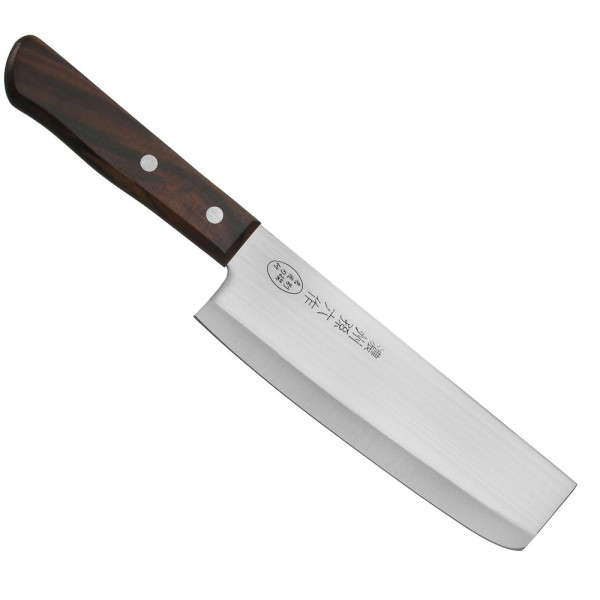
- Availability: 1
- Model: 803731
Satake Tomoko Nakiri Japanese kitchen knife 16 cm
Japanese knife for precise cutting of vegetables, fruits and herbs. This knife is the perfect choice if you want to make thin slices of vegetables and fruits. With its help, you can precisely chop the ingredients into small pieces, and you can even add them to the salad or the pan. Various cutting techniques can be easily performed with it, such as julienne or chiffonade.
The thin, rectangular blade shape is ideal for even cutting, while the straight cutting edge allows cutting in a vertical line, which is necessary for many techniques.
It is easy and comfortable to use, and makes it easier to work for longer periods of time.
The history of the nakiri (菜切) knife dates back to approximately the 17th century Edo period. Its distinctive feature is its straight blade, which makes it perfect for precise cuts on all kinds of vegetables. The word "nakiri" literally means "vegetable cutter" in Japanese, and the design of the knife reflects this purpose. The blade is generally thinner than other Japanese knives, allowing for fine slicing without crushing or crushing vegetables. The straight edge also allows for push cutting, a common technique in Japanese cuisine where clean cuts are made by pushing the knife straight down. The exact origin of the nakiri knife is unknown, but it is believed to have evolved from other Japanese vegetable knives such as the usuba and deba. Nakiri knives grew in popularity during the Edo period, when the demand for plant-based diets increased the demand for specialized vegetable knives.
Additional parameters
Blade material - U420J2 (Nippon Koshuha) stainless steel
Handle material - natural wood
Hardness - 56 HRC
Total length - 28.5 cm
Blade length - 16 cm
Blade width - 5 cm
Blade thickness - approx. 1.5 mm
Cutting edge design - single-sided
Weight - about 97 g




























